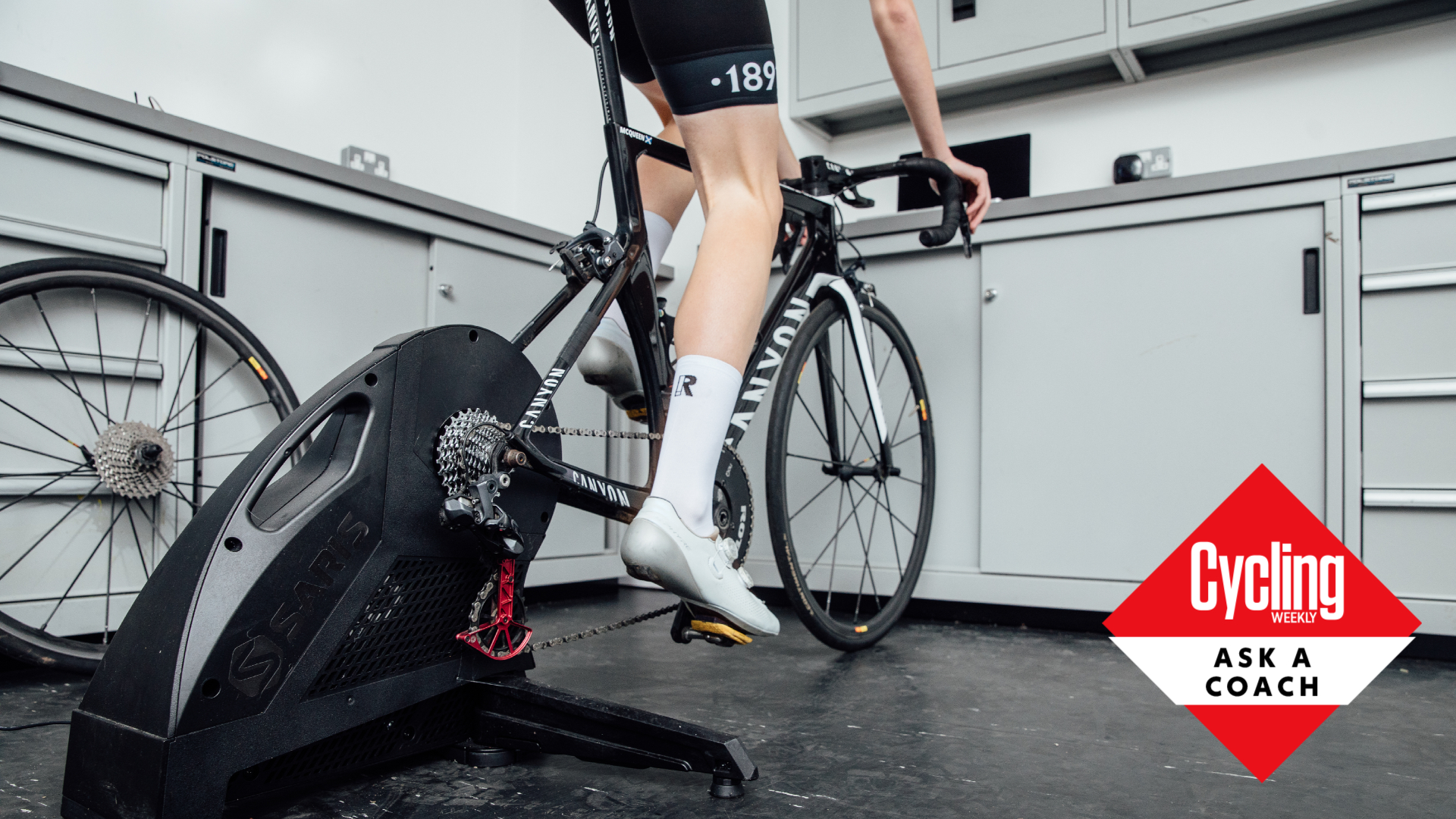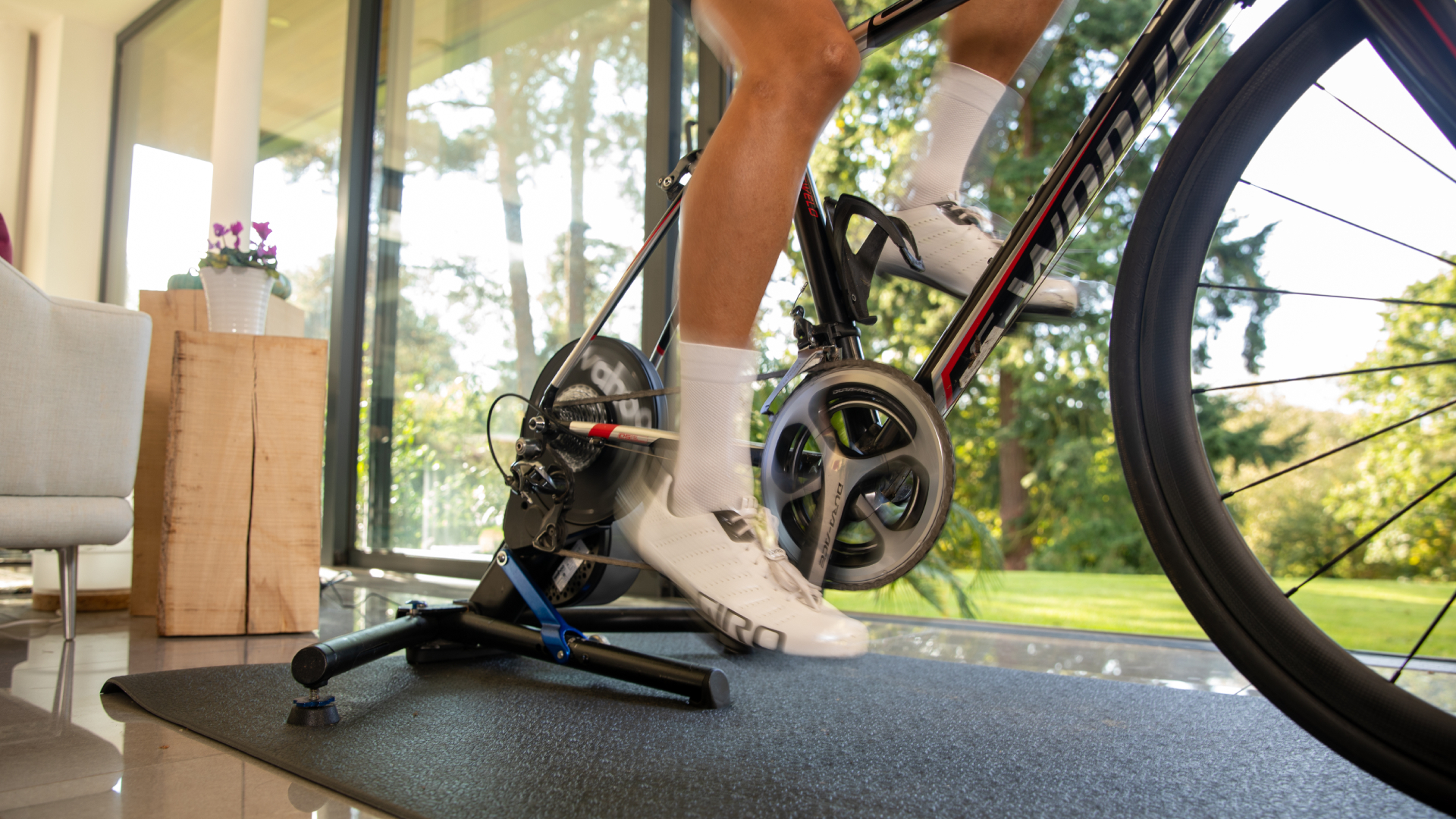Ask a coach: 'Should I be worried about a left/right power imbalance when cycling?'
How left/right power balance is calculated and its accuracy, and when you should consider getting checked out by a physio-trained bike fitter


Power balance is a metric that you will see on most of the best indoor training apps for cycling or even on your cycling computer. However, is it something to get worried about? Cycling coach James Spragg explains how left/right power balance is calculated and its accuracy, and signs that suggest that your power ‘imbalance’ may be something to get checked out by a physio-trained bike fitter.

Sports scientist and coach James Spragg is one of the experts who will be answering your questions in Cycling Weekly's ASK A CYCLING COACH series which comes out every Wednesday. Working both in research and applied settings, he currently runs Intercept Performance Consultancy.
Power balance expresses the percentage of power coming from the left and right legs during cycling, or at least it purports to. The reality is a little murkier!
Each power meter measures power in a slightly different way. However, the majority of power meters measure power through strain gauges in between the crank arm and the chainrings. These strain gauges measure the amount of ‘bend’ in the spider and from that can calculate how much force is being applied at the pedal. Multiply that force by cadence and voila…you know how much power is being produced.
To assess how much power is coming from each leg a power meter will simply compare the amount of power produced in the first half of the pedal stroke to the second half. From this, a percentage is calculated and that’s what we know as power balance.
Now all power meters do this slightly differently. For example, some power meters only use part of half pedal stroke – for example from 2 o’clock to 5 o’clock in the first half and 7-11 in the second half. That means any power applied very early or very late in the pedal stroke isn’t counted. Another thing that is often not counted for is the negative force. Negative force is produced when one leg doesn’t get out of the way quickly enough and therefore exerts a force on the pedal that is resisting the movement of the cranks. In this example, when you look at your power balance it would look like one leg is working harder than the other, but the reality is that in fact one leg is producing more negative force.
Another possibility is that both legs are producing the same amount of force on the pedals but one leg is doing a less good job of producing power in a propulsive direction. Unless the force is applied perfectly perpendicular to the crank arm then some of the applied force will be wasted.
So power balance might not be telling you the whole story.
Get The Leadout Newsletter
The latest race content, interviews, features, reviews and expert buying guides, direct to your inbox!
Because of some of the reasons outlined above, and possibly some natural asymmetry – most riders will have some degree of ‘imbalance’. Looking through the professional athletes I work with a 48-52 split is not uncommon – especially at easier intensities. However, another common theme is that as riders ride harder the power balance will typically start to even out.
Signs that you should worry about a left/right power imbalance

There are however a few situations when a power ‘imbalance’ might be something to get checked out.
As a good rule of thumb – if there is a difference between legs and this doesn’t improve as you ride harder then it might be a good idea to go and see a good local bike fitter.
Likewise, if the power balance gets worse rather than better as you go harder then again, I would again recommend you book in with your local bike fitter.
I would always recommend seeing a physio-trained bike fitter as they will be able to give you the best insight into resolving the issues – if there is indeed an issue to resolve.
For 99 per cent of riders, power balance is not something to be worried about. However, if there is a large difference or the difference increases when you go harder than its always best to get it checked.

Thank you for reading 20 articles this month* Join now for unlimited access
Enjoy your first month for just £1 / $1 / €1
*Read 5 free articles per month without a subscription

Join now for unlimited access
Try first month for just £1 / $1 / €1
James Spragg is a sports scientist and coach, working both in research and applied settings. When not working with athletes James can be found skiing, climbing, cycling or drinking coffee!
Alongside Dan Lorang and Peter Leo, James runs Intercept Performance Consultancy. Over the last 8 years in various roles, as coaches, performance consultants, performance managers, and sports scientists, Dan, James and Peter have played a role in helping athletes achieve more than 10 World Championship titles, several Olympics medals (including a Gold and Silver Medal in Tokyo 2020) and several Top 5 results in some of the biggest sporting events on the planet (Tour de France, Olympics, World and European Championships). Our single focus is on improving performance in all settings.
-
 Trek, State and Specialized raise bike prices while other brands limit US releases — Is this just the beginning?
Trek, State and Specialized raise bike prices while other brands limit US releases — Is this just the beginning?As tariffs hit, the bike industry is forced to adapt, whether through price increases, limited releases, or a restructuring of supply chains
By Anne-Marije Rook
-
 How I got my non-cyclist friend hooked on riding bikes — and how you can, too
How I got my non-cyclist friend hooked on riding bikes — and how you can, tooWith a little bit of gentle guidance, “bikes aren’t my thing” can turn into “when’s our next ride?”
By Marley Blonsky